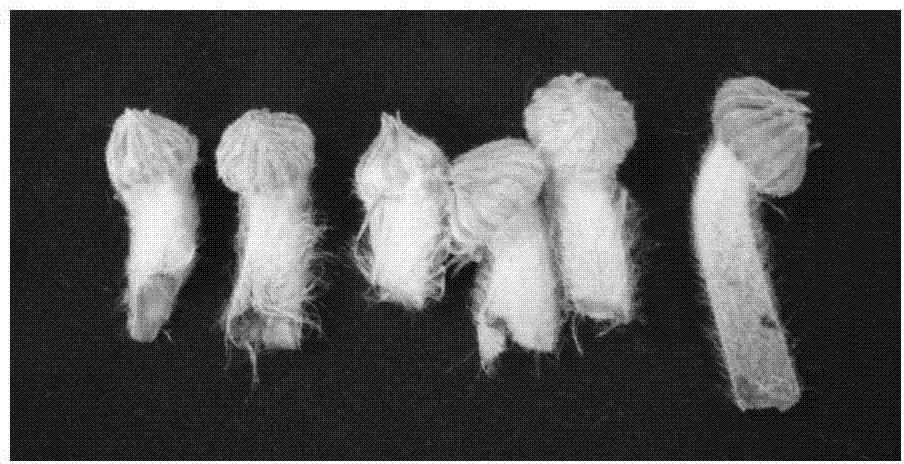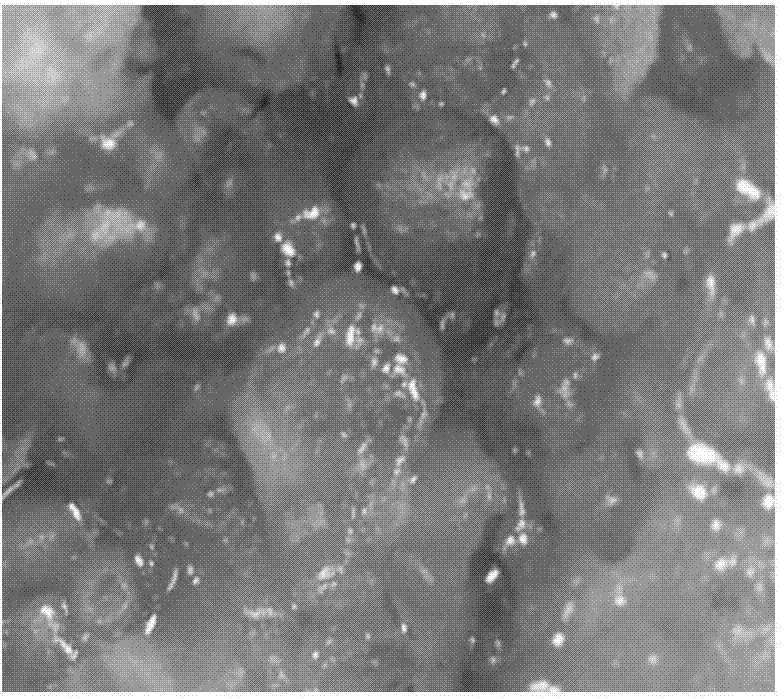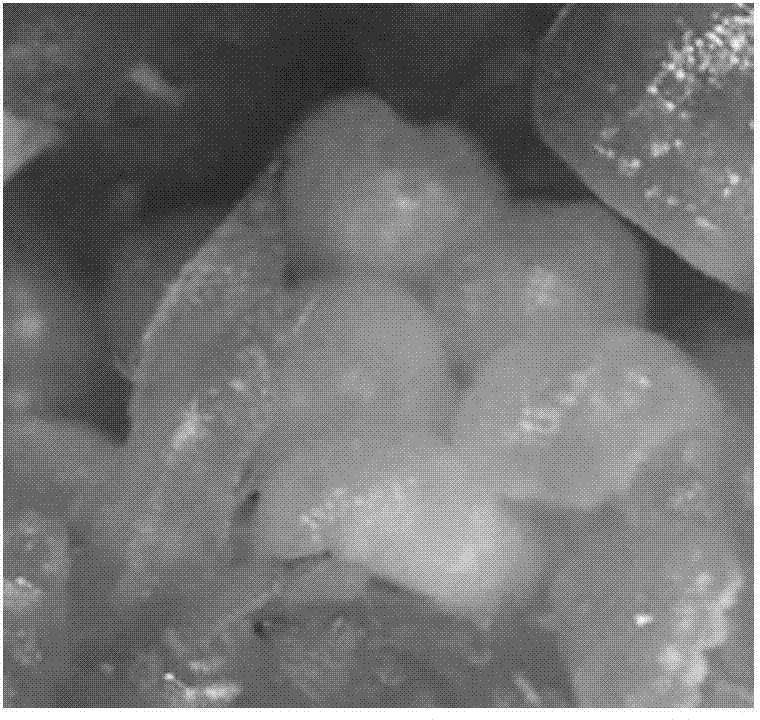Method for obtaining African daisy regeneration plant through inducing somatic embryo
A technology for somatic embryos and plant regeneration, which is applied in the fields of botanical equipment and methods, plant regeneration, horticultural methods, etc., can solve the problems of chlorosis and vitrification of leaves of sprouts and seedlings, and achieves high seedling rate, easy access to materials, The effect of shortening the culture period
- Summary
- Abstract
- Description
- Claims
- Application Information
AI Technical Summary
Problems solved by technology
Method used
Image
Examples
Embodiment 1
[0050] Example 1 Obtaining Gerbera Regenerated Plants by Inducing Somatic Embryos
[0051] 1) Prepare the medium for inducing gerbera somatic embryos of the present invention, the formulation of which is shown in Table 3.
[0052] table 3
[0053]
[0054]
[0055] Among them, 35 g / L of sucrose and 6.5 g / L of agar powder were added to the induction medium, and pH=5.8-6.0.
[0056] 2) choose the gerbera young flower bud (diameter is 5-6mm, see figure 1 ), rinse with running water for 30 minutes, then stir and wash with detergent water, then disinfect with 70% (volume ratio) alcohol on the ultra-clean bench for 30-60s, and then use 0.1% (volume ratio) HgCl 2 Disinfect for 10 minutes, and finally rinse 5 times with sterile water, blot the surface moisture and set aside.
[0057] 3) On the ultra-clean bench, peel off the calyx and the small inflorescence on the small flower bud with a scalpel, and cut off its outer layer.
[0058] 4) The whole receptacle is inoculated in...
Embodiment 2
[0067] Example 2 Method for Obtaining Gerbera Regenerated Plants by Inducing Somatic Embryos
[0068] With reference to the cultivation process in Example 1, except that the content of the plant growth regulator in the induction medium in Table 1 was adjusted to the content shown in Table 5, the rest of the steps were the same as in Example 1.
[0069] table 5
[0070] Plant Growth Regulator
Dosagemg /
6-BA
7
KT
0.8
TDZ
0.05
NAA
0.4
PIC
0.3
[0071] Among them, mg / L represents the number of milligrams of each component contained in each liter of medium, sucrose in the medium is 30g / L; agar powder is 6.5, pH=5.8-6.0.
[0072] The induction rate of somatic embryos was 45.5%, and the seedling rate of small buds was 100%.
[0073] Utilizing the present invention to cultivate gerbera tissue culture seedlings can simplify the culture procedure, shorten the culture period, and improve seedling quality, and t...
PUM
| Property | Measurement | Unit |
|---|---|---|
| Diameter | aaaaa | aaaaa |
| Diameter | aaaaa | aaaaa |
Abstract
Description
Claims
Application Information
 Login to View More
Login to View More - R&D
- Intellectual Property
- Life Sciences
- Materials
- Tech Scout
- Unparalleled Data Quality
- Higher Quality Content
- 60% Fewer Hallucinations
Browse by: Latest US Patents, China's latest patents, Technical Efficacy Thesaurus, Application Domain, Technology Topic, Popular Technical Reports.
© 2025 PatSnap. All rights reserved.Legal|Privacy policy|Modern Slavery Act Transparency Statement|Sitemap|About US| Contact US: help@patsnap.com



